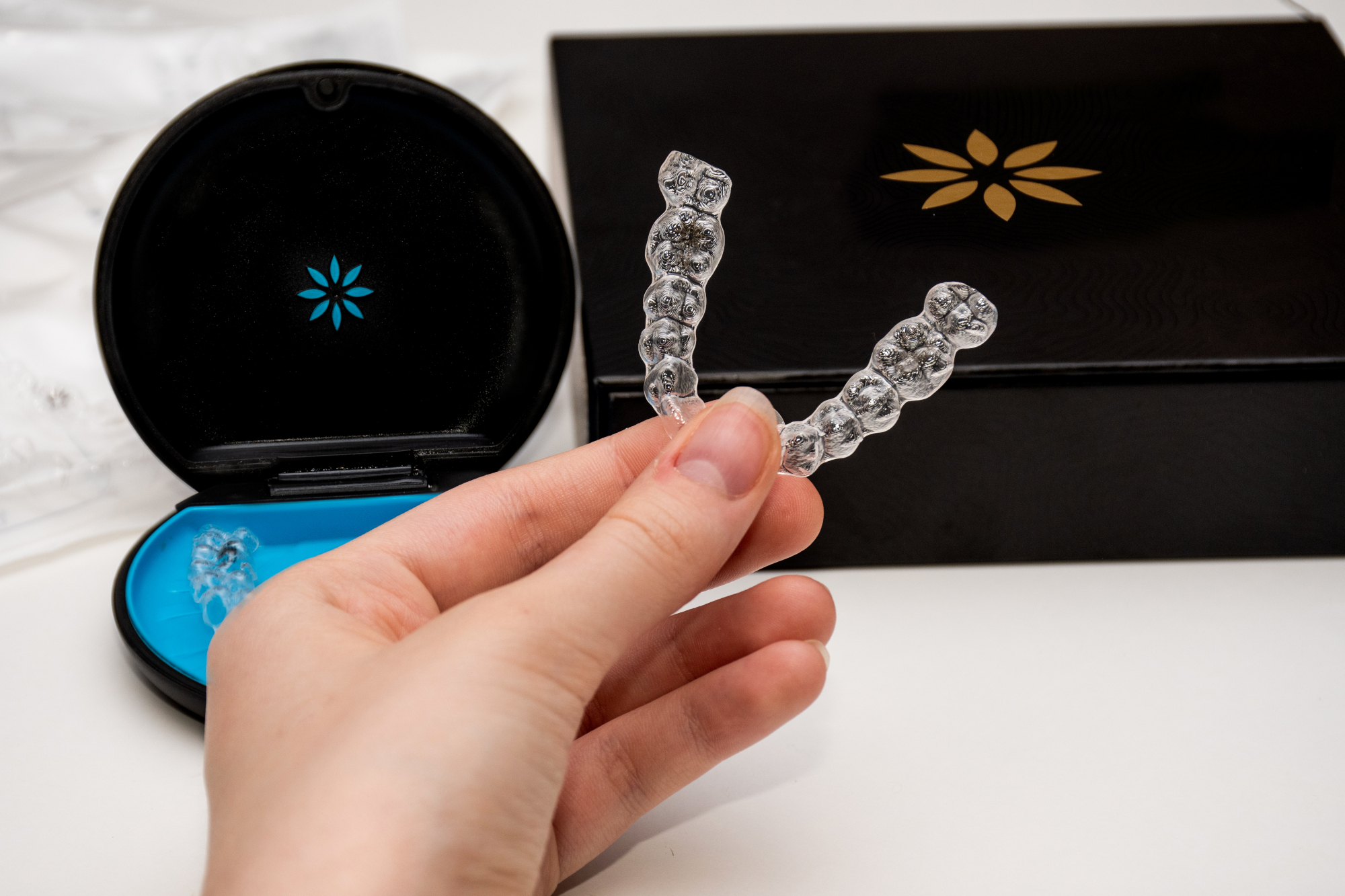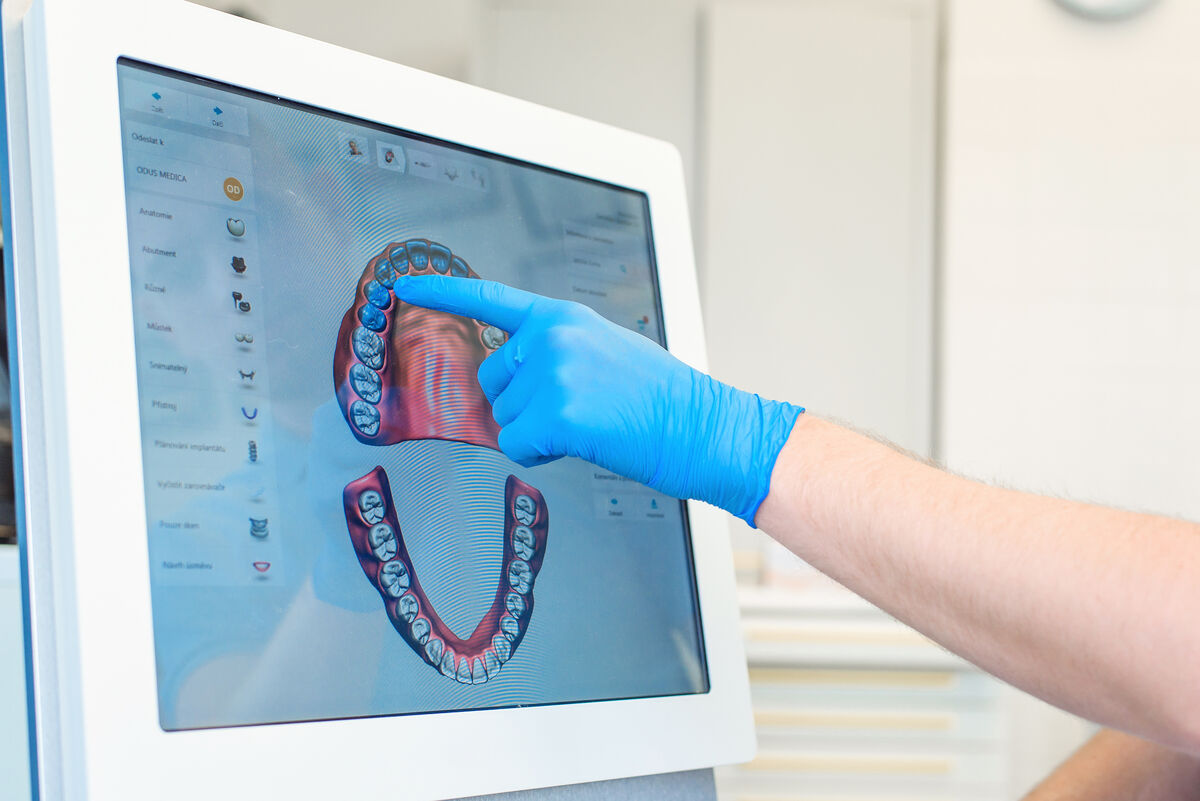Contents

Invisalign: The Benchmark for Clear Dental Aligners Explained
Do you aspire to a perfectly aligned smile but are put off by the idea of traditional braces with their metal brackets? Discover Invisalign, the pioneer and world leader in clear aligner orthodontic treatment, which has been transforming cosmetic dentistry for over two decades.
Thanks to its custom, nearly invisible aligner technology, Invisalign allows for the discreet, comfortable, and effective correction of tooth position. But how exactly does this innovative system work? What are its advantages, limitations, and costs? This complete guide answers your questions.
Invisalign: Definition and Origin
Launched in 1997 by Align Technology, a Silicon Valley-based company, Invisalign is an orthodontic system that uses a series of clear, removable aligners to gradually move teeth. These trays are custom-made for each patient from a 3D digital model of their dentition.
The Key Concept
Instead of fixed brackets and wires, Invisalign uses a sequence of personalized trays, each slightly different from the last, to apply controlled forces and move teeth toward their ideal final position.
How Does Invisalign Treatment Actually Work?
The success of Invisalign is based on advanced technology and a precise process:
- Digital Scan: The treatment begins with a precise 3D scan of your dentition using an intraoral scanner (often Align Technology's iTero® scanner). No more messy impression putty!
- 3D Modeling (ClinCheck®): From the scan, the orthodontist uses the ClinCheck® software to create a complete virtual treatment plan. This software allows you to visualize the planned tooth movements step by step, from the initial position to the desired final position. You can even see a simulation of your final result before you start.
- Aligner Manufacturing: A unique series of trays is custom-made using a patented thermoplastic material called SmartTrack®. This material is designed to apply gentle, constant forces more predictably.
- Wearing the Aligners: You wear each set of aligners for about 1 to 2 weeks, as recommended by your practitioner, for a minimum of 20 to 22 hours per day. You only remove them to eat, drink (anything other than water), and brush your teeth.
- SmartForce® Attachments: In many cases, small, tooth-colored composite buttons are temporarily bonded to certain teeth. They serve as anchors for the aligners to apply the necessary forces for more complex movements (rotations, extrusions). They are discreet but can make the aligners slightly more noticeable.
- Monitoring and Adjustments: Regular check-ups (often every 6 to 8 weeks) allow the orthodontist to ensure the treatment is progressing as planned and to give you the next sets of aligners.
- Refinement Phase: It is common for an additional series of aligners to be needed at the end of the treatment to fine-tune the final details and achieve the optimal result.
- Retention: Once the desired alignment is achieved, a retention phase is essential to maintain the results. Invisalign offers Vivera® retainers, which are also clear and custom-made.

What Are the Advantages of Invisalign?
The success of Invisalign can be explained by its many advantages over traditional braces:
- Unmatched Discretion: The aligners are nearly invisible, allowing for orthodontic treatment without it being (almost) noticeable. This is the most cited advantage.
- Improved Comfort: Made of smooth, fitted plastic, they lack the wires and brackets that can irritate the cheeks and lips.
- Removability: Being able to remove the aligners to eat, drink, brush, and floss provides optimal freedom and oral hygiene, which is impossible with fixed braces.
- Predictability: Thanks to the 3D ClinCheck® planning, both the patient and the practitioner have a clear vision of the process and the expected outcome.
- Fewer Emergency Visits: No risk of a broken wire or a detached bracket requiring an unscheduled visit to the orthodontist.
Invisalign: Disadvantages and Constraints to Consider
Despite its advantages, Invisalign treatment also has some points to consider:
- Discipline Required: Success depends entirely on diligently wearing the aligners (20-22 hours/day). Forgetting to put them back in after meals can compromise the treatment.
- Daily Management: You have to remember to remove the aligners before every meal or drink (except water), clean them, and brush your teeth before putting them back in.
- Cost: Invisalign treatment is often more expensive than traditional metal braces, although the cost can be comparable to ceramic or lingual braces.
- Visibility of Attachments: If attachments are needed, they can make the aligners slightly more noticeable.
- Initial Speech Impediment: A slight lisp may occur at the beginning of the treatment as you get used to them, but it usually disappears quickly.
- Initial Sensitivity: Pressure or tooth sensitivity may be felt when switching to a new set of aligners, which is a sign that the teeth are moving.
The Key Factor: Your Compliance
Strictly adhering to the daily wear time (20-22h) is the number one condition for the Invisalign treatment to work correctly and on schedule.
Invisalign vs. Braces: The Comparison
| Criterion | Invisalign (Aligners) | Braces (Metal/Ceramic) |
|---|---|---|
| Visibility | Nearly invisible | Visible (Metal) or Discreet (Ceramic) |
| Comfort | Generally high (smooth plastic) | Potential for irritation (brackets/wires) |
| Hygiene | Optimal (removable) | More difficult (around brackets) |
| Diet | No restrictions (removed for eating) | Avoid hard/sticky foods |
| Discipline | High (wear 20-22h/day) | Less patient-dependent (fixed) |
| Visits | Check-ups are spaced out (6-8 weeks) | More frequent adjustments (4-6 weeks) |
| Emergencies | Rare | Possible (broken bracket, wire) |
| Cost | Moderate to High | Variable (Metal < Ceramic) |
| Treatable Cases | Very wide range (majority of cases) | All cases, including the most complex |
How Much Does Invisalign Treatment Cost?
The price of Invisalign treatment varies considerably depending on several factors: the complexity of the case, the required duration, the number of aligners needed, and the practitioner's fees.
In the US, the price range is generally:
- For short treatments (like Invisalign Lite or Express, for minor corrections): starting from $2,500 - $3,500.
- For comprehensive treatments (Invisalign Comprehensive, moderate to complex cases): between $4,500 and $8,000+.
As with other orthodontic treatments, dental insurance may cover a portion of the cost, often under a lifetime orthodontic maximum. It is essential to check with your insurance provider.
Retention: The Crucial Post-Invisalign Stage
Once the active treatment is finished and the teeth are perfectly aligned, the retention phase is essential to maintain the results long-term. Without retention, teeth have a natural tendency to shift back to their original position.
Invisalign offers Vivera® retainers, made with the same 3D technology as the treatment aligners but from a more durable material. They are usually worn at night. A fixed retainer (a wire bonded behind the teeth) may also be considered as a supplement or alternative.
Conclusion: Invisalign, an Investment in Your Smile
Combining discretion, comfort, and proven effectiveness for a wide range of alignment issues, Invisalign has established itself as a major benchmark in modern orthodontics. Its advanced technology and the enhanced patient experience it offers are appealing to more and more teens and adults.
Although it represents a financial investment and requires flawless patient cooperation, the results obtained and the comfort of the treatment make it a very attractive option for those who wish to improve their smile without the visible constraints of traditional appliances. A discussion with a certified Invisalign orthodontist is the first step to finding out if this solution is right for you.
